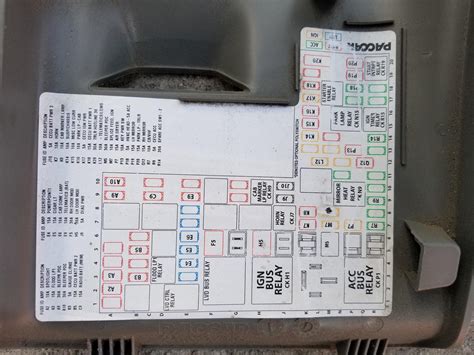fire alarm system wiring diagram by James Clear
Optimize Safety: Mastering the Art of Efficient Fire Alarm System Wiring [Diagram]
Unlock the potential of your safety infrastructure with an in-depth fire alarm system wiring diagram. Elevate protection with strategic connections.
In the realm of safeguarding your property, understanding the intricacies of a fire alarm system wiring diagram is nothing short of indispensable. Picture this: a seamless network of wires intricately connecting the lifeline of your safety infrastructure. Now, imagine having the power to optimize, streamline, and fortify this crucial system. Brace yourself for a journey into the heart of protection, where every connection matters. Today, we embark on a persuasive exploration, unveiling the secrets that transform a mere diagram into a strategic masterpiece for fortifying your safety net.
Fire Alarm System Wiring Diagram
Optimizing the wiring diagram of your fire alarm system is pivotal for seamless functionality. Efficient wiring ensures swift communication among components, enhancing the overall responsiveness of your safety infrastructure. Remember, clarity in your diagram directly correlates with the system’s reliability.
Start by mapping out the primary components: control panel, smoke detectors, heat sensors, and alarms. Use distinct symbols for each, promoting visual clarity. This not only aids in quick troubleshooting but also facilitates smoother maintenance procedures down the line.
Consider the placement of devices; strategic positioning directly impacts response time. Proximity to potential fire sources and high-traffic areas is crucial. This strategic approach ensures a prompt alert system, minimizing potential damages.
Regularly inspect and update your wiring diagram as your facility evolves. Dynamic businesses demand adaptive safety measures. Ensure that changes in layout or additional components are promptly reflected in the diagram, maintaining accuracy and reliability.
Invest in quality materials for wiring connections. Reliable wiring minimizes the risk of system failures. Prioritize fire-resistant cables and ensure secure connections to mitigate the chances of false alarms or delayed responses.
Stay compliant with industry standards and local regulations. Your wiring diagram should align with established norms, ensuring not only the safety of your occupants but also legal adherence. Regularly audit your system to guarantee ongoing compliance.
Efficiency is paramount; it’s not just about meeting standards but exceeding them. A meticulously designed fire alarm system wiring diagram is your proactive measure against potential disasters, safeguarding both lives and assets.
Deciphering the Art of Fire Alarm System Wiring Diagrams
The Blueprint of Safety
Behind the scenes of fire safety lies the unsung hero – the wiring diagram. Imagine it as the grand conductor orchestrating a symphony of alarms and detectors. Intricate? Yes. Essential? Absolutely.
Decoding Symbols: Not a Secret Society
Don’t panic; it’s not a secret society. Unravel the mysteries of symbols on your diagram. Each squiggle and dot has a purpose. Think of it as the Da Vinci Code, but with fewer conspiracies and more safety.
Strategic Placement: Not Just for Furniture
Move over Feng Shui, strategic placement is not just for furniture. Where you put those sensors and alarms matters. It’s like the chess of safety – every move calculated to protect your kingdom from the fiery dragons.
The Symphony of Components
Think of your fire alarm system as a symphony, and the wiring diagram as the sheet music. Each component, from control panels to smoke detectors, plays its unique note. The result? A harmonious defense against potential disasters.
Adapting to Change: Wiring’s Midlife Crisis
Wiring has its midlife crisis too. Your business evolves, so should your wiring diagram. Think of it as a sleek upgrade, not a crisis. Stay nimble, stay safe.
The Gold Standard: Quality Connections
Don’t settle for flimsy connections; this isn’t a Tinder date. Invest in quality materials for your wiring. Fire-resistant cables are like the superhero capes of the wiring world – ready to save the day.
The Compliance Conundrum
Staying compliant isn’t just about rules; it’s about being the cool kid who follows the rules. Ensure your wiring diagram is the teacher’s pet, meeting industry standards and local regulations.
Efficiency Unleashed
Efficiency isn’t a buzzword; it’s the secret sauce of safety. A finely tuned wiring diagram is your ticket to a safety net that doesn’t just catch fires but dances around them with finesse. Efficiency unleashed, disasters outmatched.
The Intricate Dance of Safety: Unveiling the Fire Alarm System Wiring Diagram
Imagine your fire alarm system as the superhero of your office or home, always ready to leap into action at the first sign of danger. Now, what if I told you there’s an unsung hero behind the scenes, orchestrating this ballet of safety with the precision of a maestro? Ladies and gentlemen, welcome to the world of the fire alarm system wiring diagram.
Now, I know what you’re thinking. “Wiring? Diagrams? How can that be interesting?” Well, buckle up, because we’re about to embark on a journey through the electrifying realm of fire safety, where wires take center stage, and diagrams become the dance choreography of survival.
The Prelude: Demystifying the Wires
Let’s kick off our adventure by unraveling the mysteries of those seemingly mundane wires. Think of them as the unsung heroes, the backstage crew of the safety theater. They might not take the spotlight, but oh, how crucial their role is in the grand production of protection. Each wire is a character, playing a part in the symphony of safety, connecting the dots like a masterful detective, ready to sound the alarm at the first whiff of trouble.
So, next time you look at that jumble of wires and connectors, remember: it’s not chaos; it’s the prelude to a harmonious safety performance.
The Choreography of Safety: Decoding the Diagram
Now, let’s talk about the maestro’s score, the fire alarm system wiring diagram. It’s not just a piece of paper with lines and squiggles; it’s the choreography of safety, the GPS guiding each device to play its part in perfect harmony. Decoding this masterpiece might seem daunting, like deciphering a secret code, but fear not. Once you understand the dance, you’ll see the elegance in every connection, every twist and turn of the lines leading to a crescendo of safety.
Picture this: your smoke detectors, heat sensors, and alarms are all part of an intricate ballet, moving in unison to protect your space. The wiring diagram is the dance floor, and every symbol is a dance move, telling the story of safety with grace and precision.
The Soloists: Components Taking Center Stage
Now that we’ve set the stage, let’s talk about the stars of our safety show the components. Each one is a soloist, contributing its unique sound to the symphony of protection. The fire alarm system wiring diagram brings them together like a conductor leading a world-class orchestra. From the control panel, the mastermind orchestrating the entire performance, to the smoke detectors and heat sensors, the frontline troops detecting the first whispers of danger they all have a part to play in this safety sonata.
Think of it as a concert where every note, every beat, is essential. Remove one, and the harmony is disrupted. The wiring diagram ensures that each component hits the right note at the right time, creating a safety masterpiece that deserves a standing ovation.
Intermission: Strategic Placement and Refreshments
Time for a break in our safety opera. Let’s talk about strategic placement not just for chess pieces but for our safety instruments. It’s like deciding where to place your snack table at a party location matters. In the world of safety, it’s all about anticipating where the danger might strike and placing your detectors and alarms accordingly.
Imagine your smoke detector as the superhero waiting in the shadows, ready to swoop in and save the day. But for that to happen, it needs to be strategically placed, like Batman perched on a Gotham rooftop, scanning the horizon for trouble. So, during this intermission, grab some metaphorical popcorn, strategize your placement, and get ready for the second act of our safety spectacle.
The Plot Twist: Adapting to Change
Every good story needs a plot twist, and the world of fire alarm system wiring diagrams is no different. Your business evolves, your space transforms, and the wiring diagram must adapt to these changes. It’s like a midlife crisis for wiring not a flashy sports car kind but a sleek upgrade to keep up with the times.
Think of it as the wiring system’s glow-up montage, complete with before-and-after shots. The diagram needs to reflect the current state of affairs, incorporating any changes in layout or additional components. Remember, a dynamic business demands an equally dynamic safety measure, so embrace the plot twist and let your wiring diagram evolve.
The Comedy Relief: Quality Connections and Fire-Resistant Cables
Time for a bit of comic relief in our safety saga. Let’s talk about quality connections, the superheroes behind the scenes ensuring our safety show goes off without a hitch. No one wants a superhero with a loose cape, and similarly, we don’t want loose connections in our wiring.
Enter fire-resistant cables the capes of the wiring world. They don’t catch fire; they extinguish it. Think of them as the water buckets strategically placed around a circus act. Quality connections ensure that our safety performance doesn’t turn into a slapstick comedy with false alarms and delayed responses. So, invest wisely in your safety superheroes and let the comedy be optional, not mandatory.
The Cliffhanger: Staying Compliant
Every good story leaves you on the edge of your seat, and our safety saga is no different. The fire alarm system wiring diagram has a cliffhanger staying compliant with industry standards and local regulations. It’s the part where our safety protagonist faces external challenges, but rest assured, it’s equipped to handle them.
Staying compliant is not just about following rules; it’s about being the protagonist who defies the odds. The wiring diagram must align with established norms, ensuring not just the safety of your space but also legal adherence. It’s the regulatory drama keeping our safety opera thrilling and, more importantly, within the confines of the law.
The Grand Finale: Efficiency Unleashed
Here we are, at the grand finale of our safety opera efficiency unleashed. Our safety symphony, led by the fire alarm system wiring diagram, doesn’t just meet standards; it exceeds them. Efficiency is not just a buzzword; it’s the standing ovation, the fireworks at the end of a spectacular show.
Picture a safety net that doesn’t just catch fires but dances around them with finesse. A meticulously designed wiring diagram ensures that every connection is a step in this safety waltz, a move towards a safer, more secure space. The grand finale is not just the end; it’s the beginning of a safety encore, where disasters are outmatched, and safety takes a well-deserved
1. **Introduction:**
– In the realm of safety, the fire alarm system wiring diagram is the unsung hero, silently orchestrating a symphony of protection.
– Think of it as the blueprint for safeguarding your space, a thoughtful design that ensures every component dances in harmony.
2. **Understanding the Dance:**
– Each wire in the diagram has a purpose, a role in the intricate ballet of safety.
– It’s essential to decode the symbols, making the diagram a language of safety that speaks to those who understand its thoughtful choreography.
3. **Components Taking the Stage:**
– The diagram propels the components – control panels, detectors, and sensors – into the spotlight, turning them into soloists in the safety symphony.
– Thoughtful placement and strategic positioning transform these components into guardians ready to respond with precision.
4. **Strategic Placement for Maximum Impact:**
– Consider the strategic placement of devices as a tactical move in the game of safety chess.
– Every placement decision should be thoughtful, anticipating potential threats and ensuring a swift response to protect lives and assets.
5. **Adapting to Change:**
– Embrace the idea that change is the only constant, even in the world of safety diagrams.
– A thoughtful approach involves updating the diagram to reflect the evolving needs of your space, ensuring it remains a relevant and effective safety tool.
6. **Quality Connections for Reliability:**
– Quality connections are the backbone of a reliable system, much like the foundation of a sturdy building.
– Invest thoughtfully in fire-resistant cables and secure connections to minimize the risk of system failures and enhance overall reliability.
7. **Staying Compliant:**
– Compliance is not just a box to check; it’s a thoughtful commitment to safety standards and regulations.
– Aligning your wiring diagram with industry norms ensures not only safety but also legal adherence, a crucial aspect of responsible business operations.
8. **Efficiency Unleashed for Optimal Protection:**
– Thoughtful efficiency goes beyond meeting standards; it’s about exceeding them.
– A meticulously designed wiring diagram is the key to unleashing efficiency, creating a safety net that doesn’t just meet expectations but surpasses them with thoughtful precision.
As we wrap up this journey into the intricate world of fire alarm system wiring diagrams, let’s take a moment to appreciate the complexity and beauty of the safety dance we’ve unraveled. Picture it as a neural network of safety, where every wire is a synapse transmitting signals of protection. Now, don’t let the seriousness of safety fool you; there’s a certain elegance in the way these wires waltz to the tune of security.
So, dear reader, whether you’re a seasoned safety aficionado or a curious wanderer in the realm of fire protection, remember that knowledge is power, and in this case, it’s the power to dance through the flames unscathed. Just like a well-choreographed tango, a thoughtful fire alarm system wiring diagram ensures that every step is taken with precision, leaving no room for missteps or missed beats when it comes to protecting what matters most.
As you navigate the landscape of safety in your home or workplace, think of the wiring diagram as your trusty GPS, guiding you through the labyrinth of potential hazards. Keep the dance floor well-lit, the connections tight, and the symphony of safety playing harmoniously. After all, in the grand performance of life, safety is the encore we all deserve a standing ovation to the thoughtful design that keeps us secure in the rhythm of existence.
Q & A about Optimize Safety: Mastering the Art of Efficient Fire Alarm System Wiring [Diagram] :
1. **Q: Why is understanding the fire alarm system wiring diagram important?**
– A: Understanding the wiring diagram is crucial because it serves as the blueprint for your safety infrastructure. It’s like having a map that guides every component to play its part effectively, ensuring a swift and coordinated response in case of emergencies.
2. **Q: How can I make sense of the symbols in the wiring diagram?**
– A: Think of the symbols as a unique language of safety. Take your time to decode them, just like learning a new dialect. Each symbol represents a specific device or connection, contributing to the overall clarity and efficiency of the safety dance.
3. **Q: Is strategic placement really that important in a fire alarm system?**
– A: Absolutely. Imagine it as placing chess pieces on the board. Strategic placement of sensors, detectors, and alarms ensures that potential threats are anticipated and addressed with precision. It’s not just about where, but why each component is positioned strategically for optimal protection.
4. **Q: How often should I update the wiring diagram for my fire alarm system?**
– A: Think of it as keeping your safety script up to date. Regular updates are essential, especially when your space evolves or new components are added. It’s a thoughtful practice to ensure your safety performance remains in tune with the changing dynamics of your environment.
5. **Q: Why is compliance with industry standards necessary for a wiring diagram?**
– A: Compliance ensures your safety performance isn’t a solo act but part of a larger ensemble. Aligning with industry standards is a thoughtful commitment to not only your safety but also legal adherence, making sure your safety symphony meets the expectations of the regulatory audience.
fire alarm system wiring diagram
Keywords: fire alarm, wiring diagram, safety dance, strategic placement




